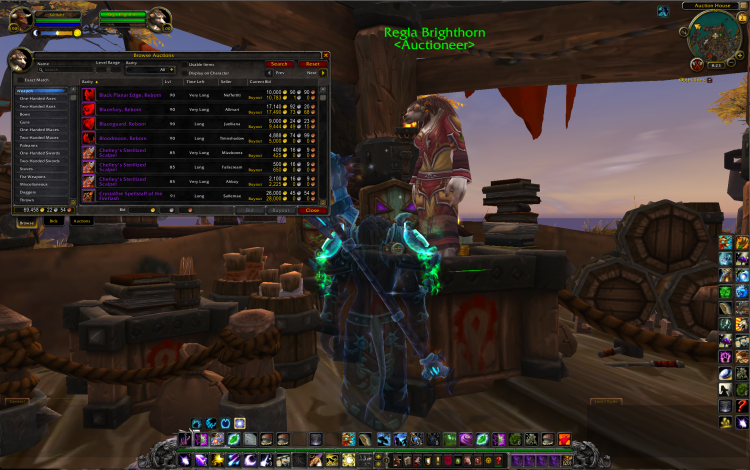Blizzard Entertainment is fighting back against gold sellers in World of Warcraft by giving players the chance to buy and sell gold themselves, using tokens for monthly subscription time.
This morning, the makers of the largest subscription-based massively multiplayer online role-playing game in the world announced a system in which players can buy tokens for 30 days of game time with cash — then sell them on an in-game auction to obtain gold for their characters.
This is the most recent dip into free-to-play online game mechanics by Blizzard in a sector that could hit $17 billion in 2017, according to market researcher SuperData. And it could have its biggest effect in Asia, where free-to-play is the reigning business model.
This comes a month after we learned that WoW is back above 10 million monthly subscribers after years or declining players.
Strapped for cash? The new system will give you a way to buy game time for in-game gold. Strapped for gold? You’ll now be able to buy it by selling the tokens. I chatted with lead game designer Ion “Watcher” Hazzikostas to find out how it works.
Yes, he’s aware of the debacle that was the real money auction house in the company’s Diablo III action-adventure game. Yes, he knows people will try to defraud the system. Yes, he’s aware of the danger that people will use this gold to try to buy their way to power and dominance. Some raid gear and auction house changes may come as a result of all this.
I’ll tell you what he said about all that in a minute; stick with us. First, the basics.
The publisher will implement this into WoW shortly — and truly soon, not the classic Blizzard Soon™ with the trademark, Hazzikostas jokes (which typically means “when it’s darn good and ready”). It’s part of patch 6.1.2, a smaller update hitting the public test realms “in the very near future.”
How it works
The person with the cash will buy a WoW Token good for 30 days of game time from Warcraft’s in-game shop. Blizzard hasn’t set the cash price yet, Hazzikostas said, but “it’s not going to be cheaper than a monthly subscription,” which runs $15 a month.
The token is bound to the player when they buy it; they cannot give it away or trade it. It won’t expire, and can’t be deleted. The only thing they can do with it is put it up on a special tab in the in-game auction house.
At the time they post it, WoW’s auction house tells them exactly how much gold they’ll get for it when it sells. While there is no set amount tokens will trade for (more on that in a second), once a transaction has been placed the price is guaranteed. In that sense, it’s more like an options market than a true auction: It has no bidding. There is no auction house cut. Players who post and buy tokens know exactly what they’ll get.
Buyers in-game can purchase the tokens with gold, and they know exactly how much they’ll pay at the time they buy a token. They receive the token after paying the price, and can then apply it to their account to add game time. Like the seller, they can’t do anything else with it — no gifts, no trading.
One nice feature: If you have a lapsed WoW account that has enough gold in it to purchase a token, you can do that right from the character select screen. Right now, lapsed accounts are restricted – players are subject to the same constraints as trial accounts, able to only play lower-level characters and barred from the auction house and trade.
On a lapsed account, if your higher level character with enough gold, you’ll see a “Reactivate with gold” button, even though you can’t log into that character.
Prices vary based on supply and demand
While buyers and sellers will see guaranteed prices at the time they list a token or purchase one, the market’s day-to-day sale prices in gold will actually fluctuate depending on auction house activity.
At any given point, all if the tokens in the auction house will share the same price across a geographic region (the Americas, Europe, Taiwan, Korea, and China), but that price will move up or down depending on an algorithm calculating historical supply or demand in that area.
One interesting note is that no matter when or how big the movement in the market is, sellers and buyers will always be guaranteed to get the price they saw. If a seller posts a token and the market moves downward before a buyer picks it up, the purchaser will pay the cheaper price — but the seller will still get the higher gold price they were quoted when listing the token. The same thing will happen in reverse: If a buyer pays more gold for the token than the seller was promised, the seller will still get paid the lower price.
“Potentially there are small amounts of gold that are being created, but also destroyed,” Hazzikostas said. “It’s about security and certainty, and it all evens out.”



